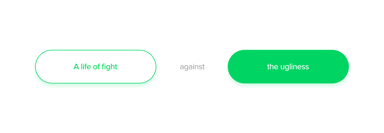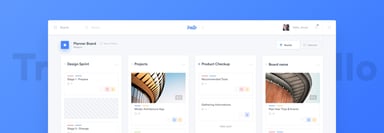How to Create a Case Study in UX and Product Design Portfolio

They’re a wonderful way to convey your skills to potential clients - not just your ability to deliver beautiful visuals, but also to do research and gain deep understanding of various projects.
To learn how to build amazing case studies for your portfolio, you need to focus on their most important ingredients: a definition of the problem, project KPIs, team structure, design process, metrics, and key takeaways. If you want to take a look at some inspiring UX case study examples, Behance and Medium can be wonderful resources.
The importance of case studies to every designer
If you work in product design, a rich design portfolio of case studies can help your career immensely. By looking at them, potential clients can evaluate whether you understood the businesses of your previous clients and applied that understanding when creating your designs. They can judge whether or not the visuals you make fit their needs and preferences. And finally, case studies are like a window into your mind, since you need to explain your process of coming up with specific solutions to specific problems.
How to create a great case study
There’s no golden rule or shortcut that can help you with this. Every project is different and will require a different approach. You’ll use various methodologies and tools, the process of researching your client’s business won’t be the same every time, and the specifics of the client’s market and industry will make the project unique. Still, every time you’re happy with the results of your work, you should use the opportunity to showcase it.
Focus on your goal, which is to show your process, the actions you took, and the conclusions you arrived at. A good case study doesn’t just list what you did and why. It should be a story about how you learned about the client’s needs, identified their goals and challenges, found the right solutions and the best ways to implement those solutions. The story needs to be attention-grabbing and informative, to leave the audience feeling like they’ve gained useful knowledge or were inspired in a meaningful way.
What an amazing case study should look like
This isn’t so much a recipe for a great case study (we’ve already established that the process of creating one will be different each time), but a list of ingredients that every good case study should include. First, you need a definition of the problem you’ve solved - which usually can be found in the brief your client sent you, so this part should be easy. To achieve a good definition, focus on the project’s KPIs, as they can give you the answer to the question of why you’ve been asked to provide your services. Was the conversion rate low? Did the client want to enter a particular niche? These are the actual reasons for your involvement in the project.
Step two is to describe the project team and its structure. You don’t need a list of names - in fact, you’ll usually avoid using any - but you do want to define the role the designer played in the project. It might be different every time as each project will have a different focus.
Next, it’s time to take a close look at the problem you’re solving. Show your entire process: from your initial approach, through the actions you decided on to create a solution. Spend some time on your methodology and tools - it’s always good to show familiarity with a number of solutions.
Finally, focus on your execution and the solutions you used to address the identified pain points. Use metrics and numbers to back up your claims, if you can - they’re a great help for your audience, as they can help them understand what your involvement in the project truly meant. After that, it’s time to talk about your key takeaways: what you’ve learned, which solution had the most impact, what problem was the most important to solve. This is also a nice time to use metrics.
Get inspired
Sometimes, the best way to come up with a good, interesting structure for your case study is to look for inspiring examples. While you don’t want to copy others’ ideas one for one, it’s okay to learn by example. Analyse the case studies you see, identify the great ones, and think hard about what makes them good. What helped you understand the problem? How was the process shown? What metrics allowed you to understand the context of the project? These are only some of the questions to keep in mind while browsing the case studies at the Case Study Club, the UX Collective, and on Behance.





.jpg?width=384&height=202&name=10%20Tips%20for%20Stunning%20%20Dark%20Mode%20Design%20(1).jpg)


















.jpg?width=384&height=202&name=Orbem%20website%20on%20a%20laptop%20(1).jpg)
